Delaware • New Jersey • Pennsylvania
New York • United States of America
- Why We Monitor
- Special Protection Waters
- Monitoring for 6-PPDq, an Emerging Contaminant
- Biomonitoring
- Monitoring Thermal Plumes
- PFAS Monitoring with NJWSA
- Chlorides Monitoring in Special Protection Waters
- Cyanotoxin Study
- Delaware Estuary Water Quality Monitoring Program
- Bacteria Studies
- Nutrient Monitoring with NJDEP
- Monitoring for PCBs & other Toxics
- Monitoring Dissolved Oxygen in the Estuary
- Monitoring Phytoplankton Blooms
The DRBC knows that you can't manage what you don't measure and employs a robust water quality monitoring program to ensure criteria are being met.
Right now, staff is gearing up for a busy monitoring season. From protecting the existing high water quality of the non-tidal Delaware River to monitoring bacteria in the Delaware Estuary, read more below about the programs we are collecting data for this season.
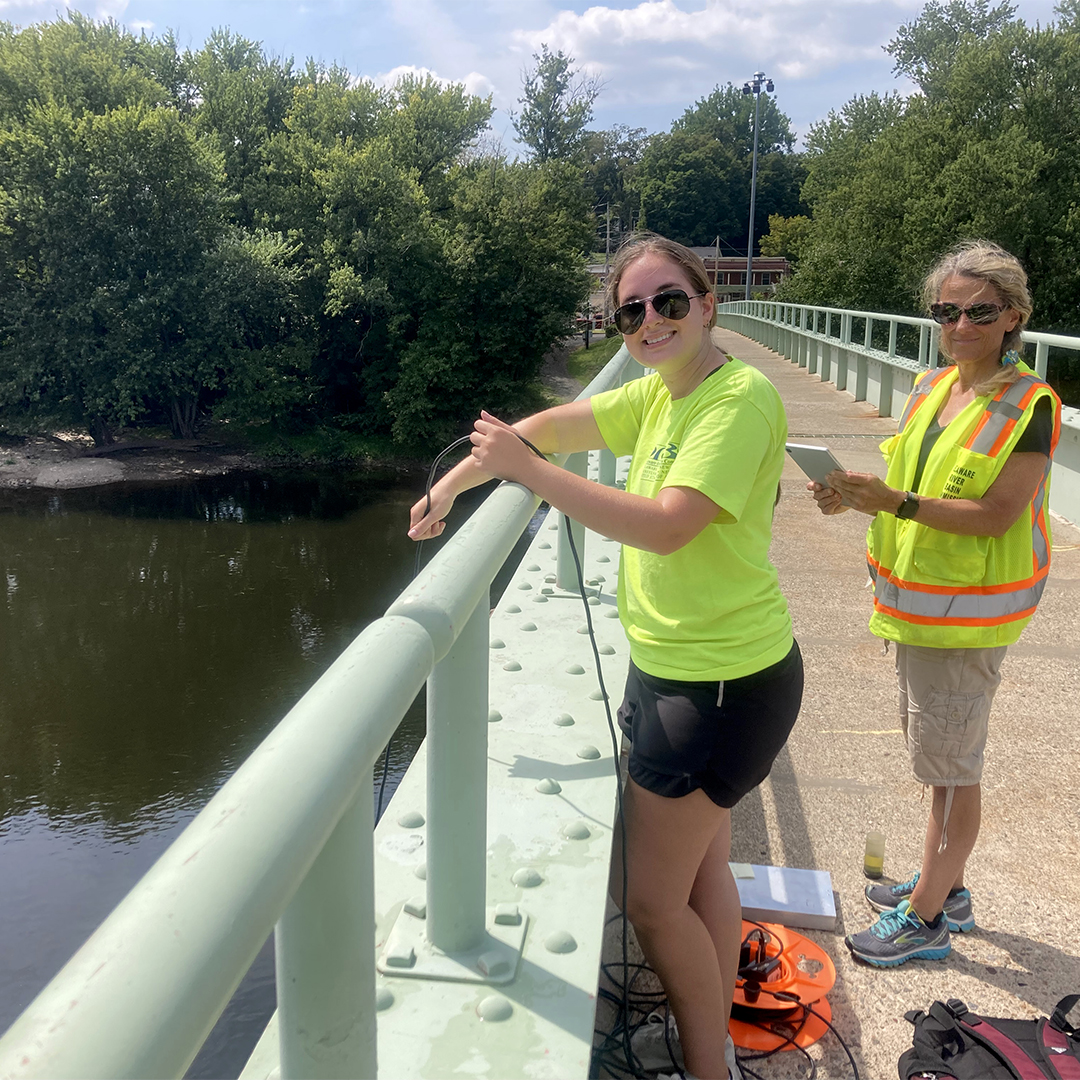 |
| Two DRBC staff collect a water sample from a bridge. Photo by the DRBC. |
Last summer, staff began a No Measurable Change Assessment for its Special Protection Waters (SPW) Monitoring Program, which protects the existing high water quality in the non-tidal Delaware River.
In 2024, the assessment continues, following the same plan as in 2023. The assessment is planned to be completed in 2025.
• Samples will be collected May - September, twice a month.
• Samples will be collected from 17 sites.
• National Park Service staff will monitor the upper & middle Delaware.
• DRBC staff will monitor the lower Delaware.
• Parameters include Alkalinity, Chloride, Hardness, Sulfate, TSS, TDS, Nirtate+Nitrite, Total Nitrogen, Ammonia, TKN, TP, Silica, Ca, Mg, Na, K, DO, turbidity, pH and water temperature.
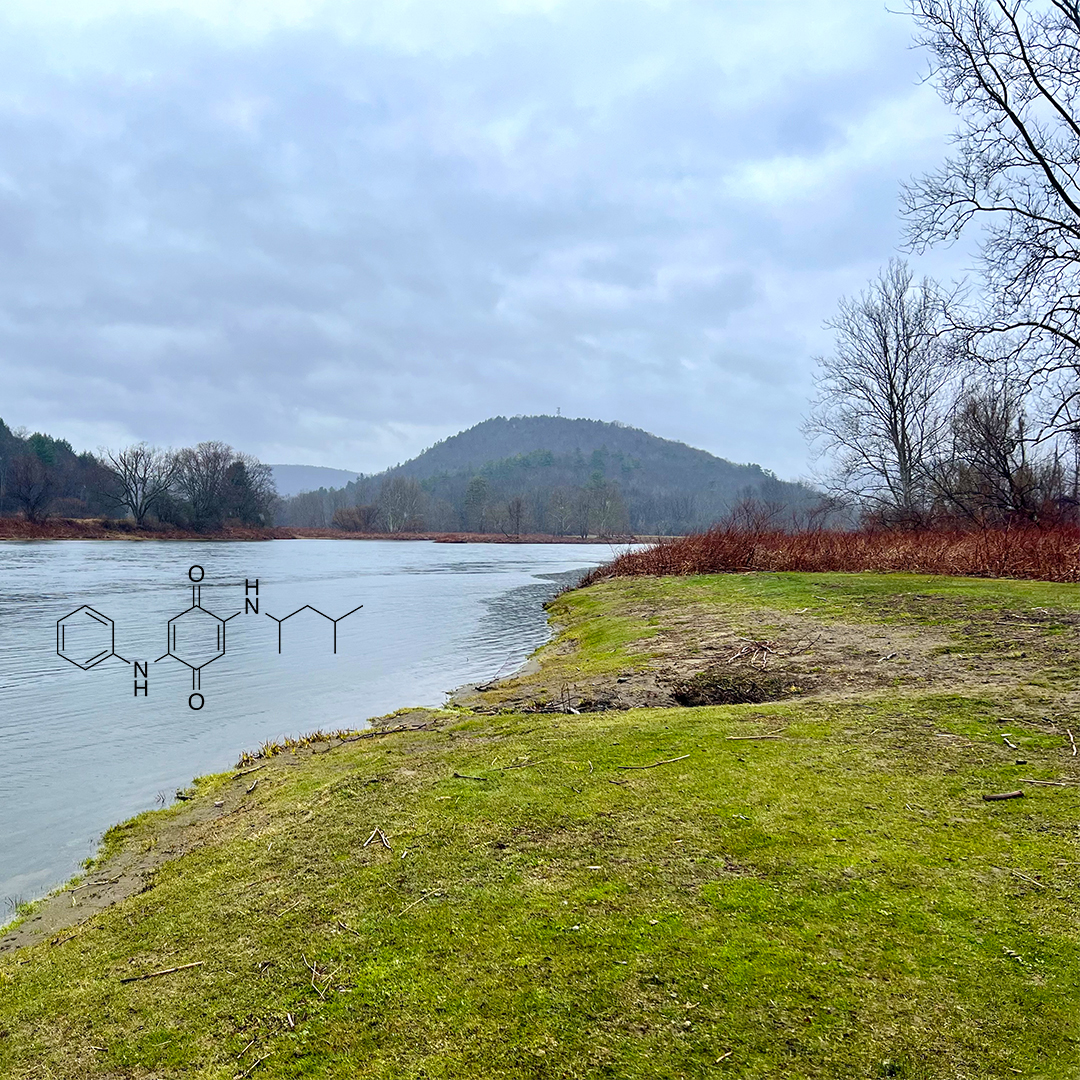 |
| The Delaware River at Hancock, N.Y. This is one of the planned sample sites for the DRBC's 6-PPDq study. Photo by the DRBC. |
All tires have a chemical called 6-PPD to prevent cracking. Through driving, tiny bits of rubber tire particles containing 6-PPD are shed onto driving surfaces, getting into local waterways when it rains.
When 6-PPD reacts with water, it forms 6-PPD quinone (6-PPDq), which is toxic to salmonid fish. Salmonids include rainbow, brown and brook trout, all species found in the Delaware River Basin.
• The DRBC received a grant to complete a first of its kind study in the DRB to monitor for the presence of 6-PPDq in waterways.
• In 2024, the DRBC will monitor 13 sites in the Delaware River Basin, targeting waters known for trout fishing.
• Eight sites will be in the upper Delaware River Basin, a world-class trout fishery.
• The remaining five sites are located in the Middle Delaware, Lower Delaware, Lehigh River and Schuylkill River sub-basins.
• Samples will be collected to develop baseline concentrations of 6-PPDq during normal flow and after significant rain events.
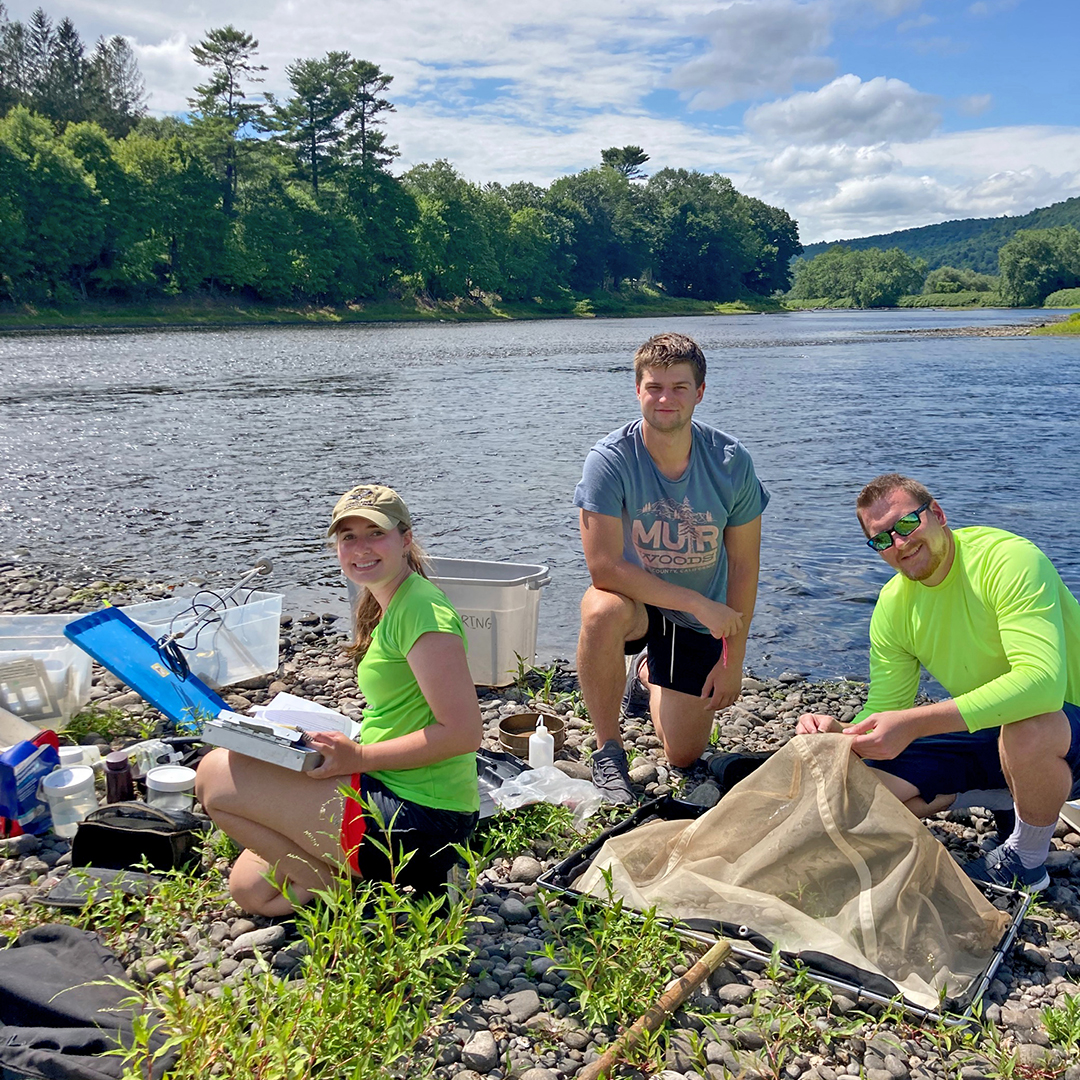 |
| DRBC staff collect samples for its Biomonitoring Program. Photo by the DRBC. |
In 2024, the DRBC will perform biological monitoring of the non-tidal Delaware River, which is protected by DRBC's Special Protection Waters regulations.
• A total of 25 sites will be sampled during August and September, targeting low flows.
• Data collected include macroinvertebrates, habitat assessment, nutrients and conventional pollutants, algae and periphyton and chlorophyll-a.
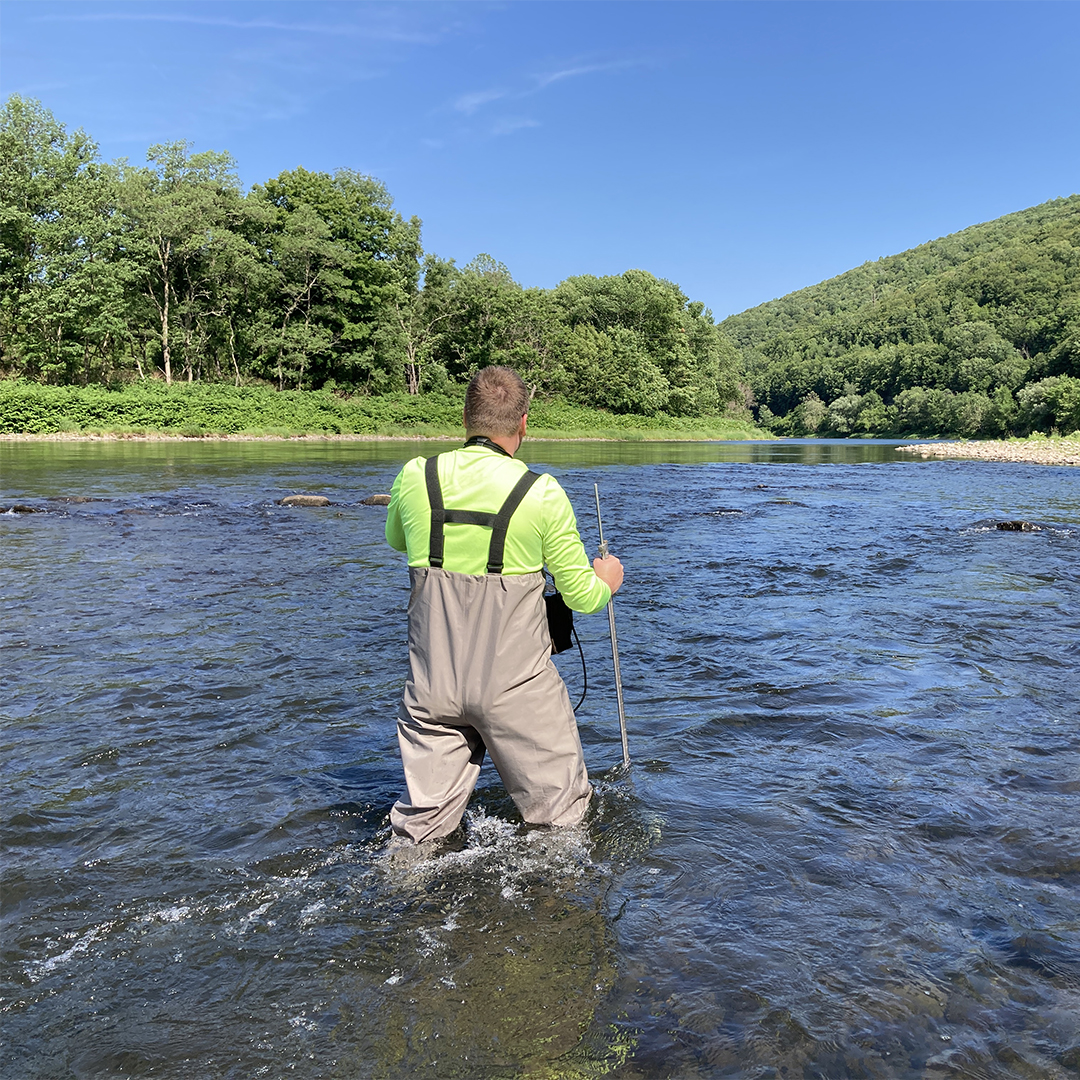 |
| A DRBC staffer collects a low flow measurement on the Delaware River. Photo by the DRBC. |
In the summer 2024, using a drone equipped with a thermal imaging camera, DRBC staff will perform thermal plume surveillance in the upper Delaware River at five locations.
• Five locations on the upper Delaware River mainstem are targeted, all supporting cold water fisheries.
• Understanding if undocumented thermal plumes are occurring is important, as warmer waters impact cold water fish species.
• This data will help assess the accuracy of near-field modeling of heat dissipation areas and allow us to visualize and identify undocumented thermal plumes.
• Warmer waters and corresponding low flow conditions are important to track, as climate change is expected to increase the frequency of these conditions.
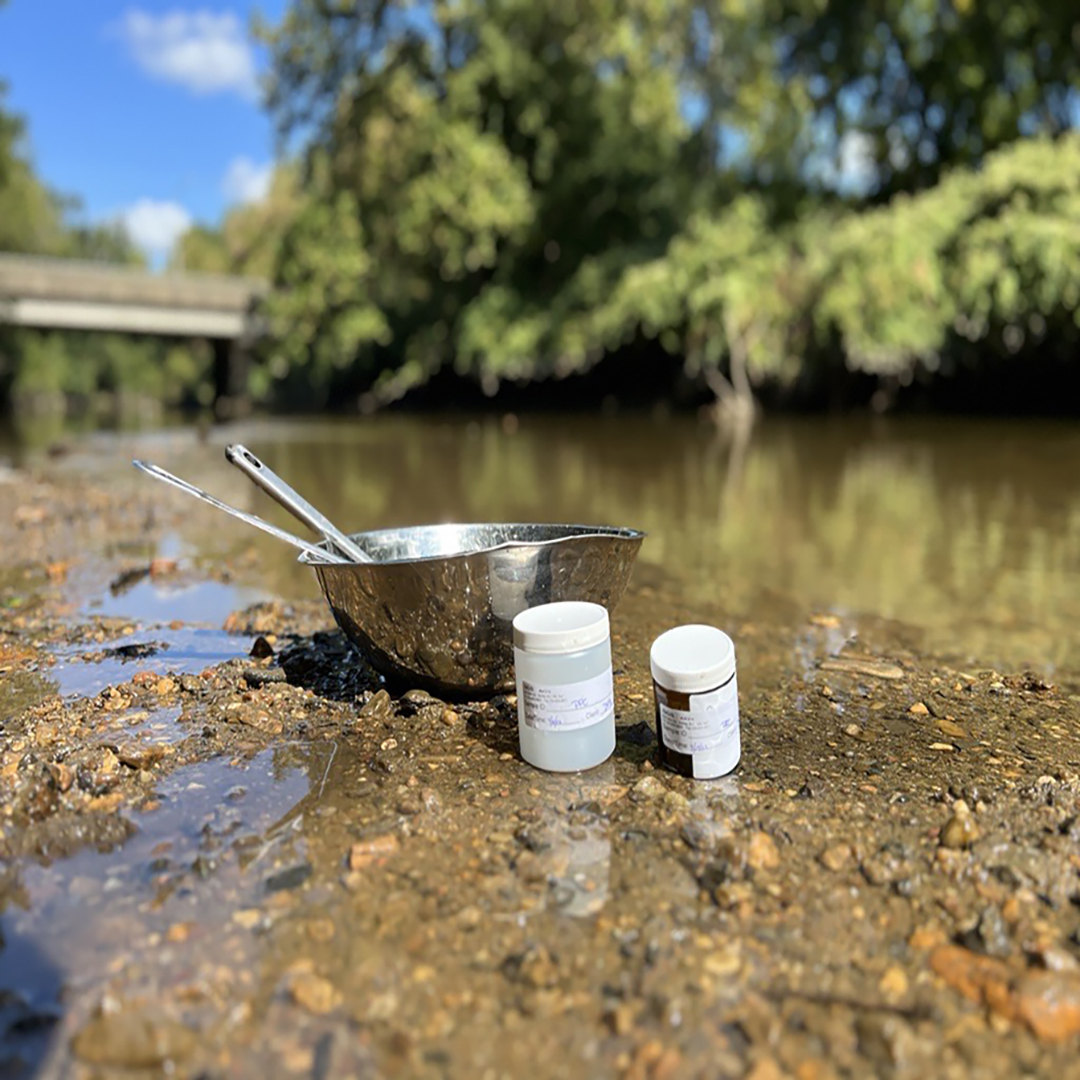 |
| Water and sediment samples are collected to monitor for PFAS. Photo by the DRBC. |
PFAS are a group of >10,000 chemical compounds that have varying degrees of persistence, toxicity and bioaccumulation in the environment. Humans and wildlife are exposed through direct (swimming, drinking water, etc.) and indirect (consumption of contaminated organisms, etc.) pathways. With PFAS' ubiquitous nature, there is increasing evidence of its adverse effects on human health and the environment.
• The DRBC monitors for PFAS in surface water, sediment and fish and is currently working to synthesize data and complete reports to provide an overall picture of PFAS in the DRB.
• In 2024, staff will be completing a cooperative sampling effort with the N.J. Water Supply Authority (NJWSA) to track down PFAS in the Delaware & Raritan Canal.
• Passive PFAS samplers (POCIS) will be deployed at 6 locations along the canal.
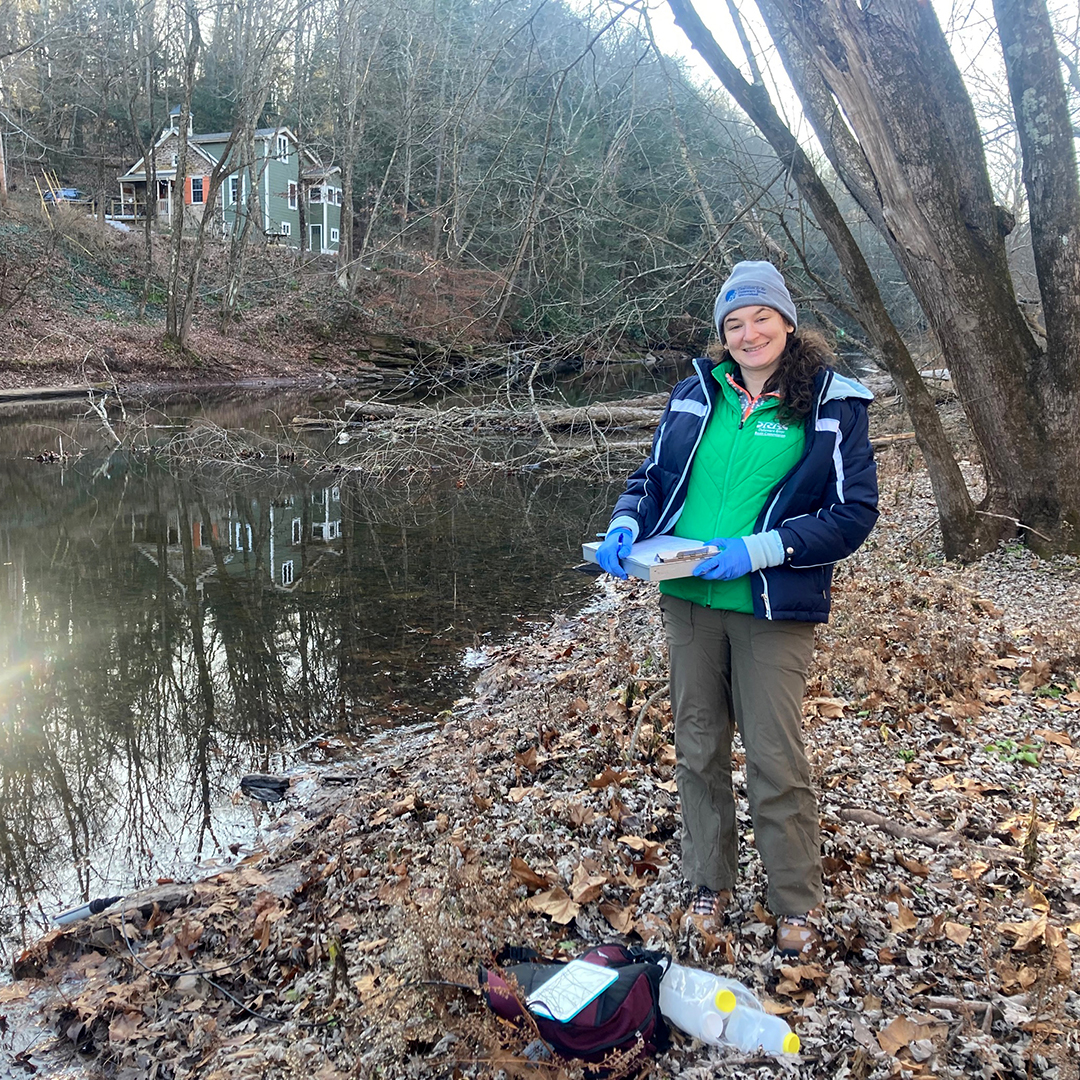 |
| DRBC staff collects chlorides data at a Delaware River tributary. Photo by the DRBC. |
In the non-tidal Delaware River, the DRBC's Special Protection Waters Program is effective at maintaining existing water quality. However, the one increasing trend seen is chlorides, primarily from winter road salting. While concentrations are below water quality criteria, this trend is being monitored by the DRBC.
• The DRBC completed a three year study in 2023 collecting data at 27 sites; a draft report summarizing findings and discussing next steps is forthcoming.
• In 2024, staff identified a subset of the 2021-2023 non-tidal chloride monitoring sites for further and more frequent monitoring.
• Twice monthly monitoring at 10-15 locations will begin in October 2024 and go through winter.
• Continuous conductivity loggers will be deployed in tributary locations and grab water samples will be collected for chloride, magnesium, potassium, sodium and other ions.
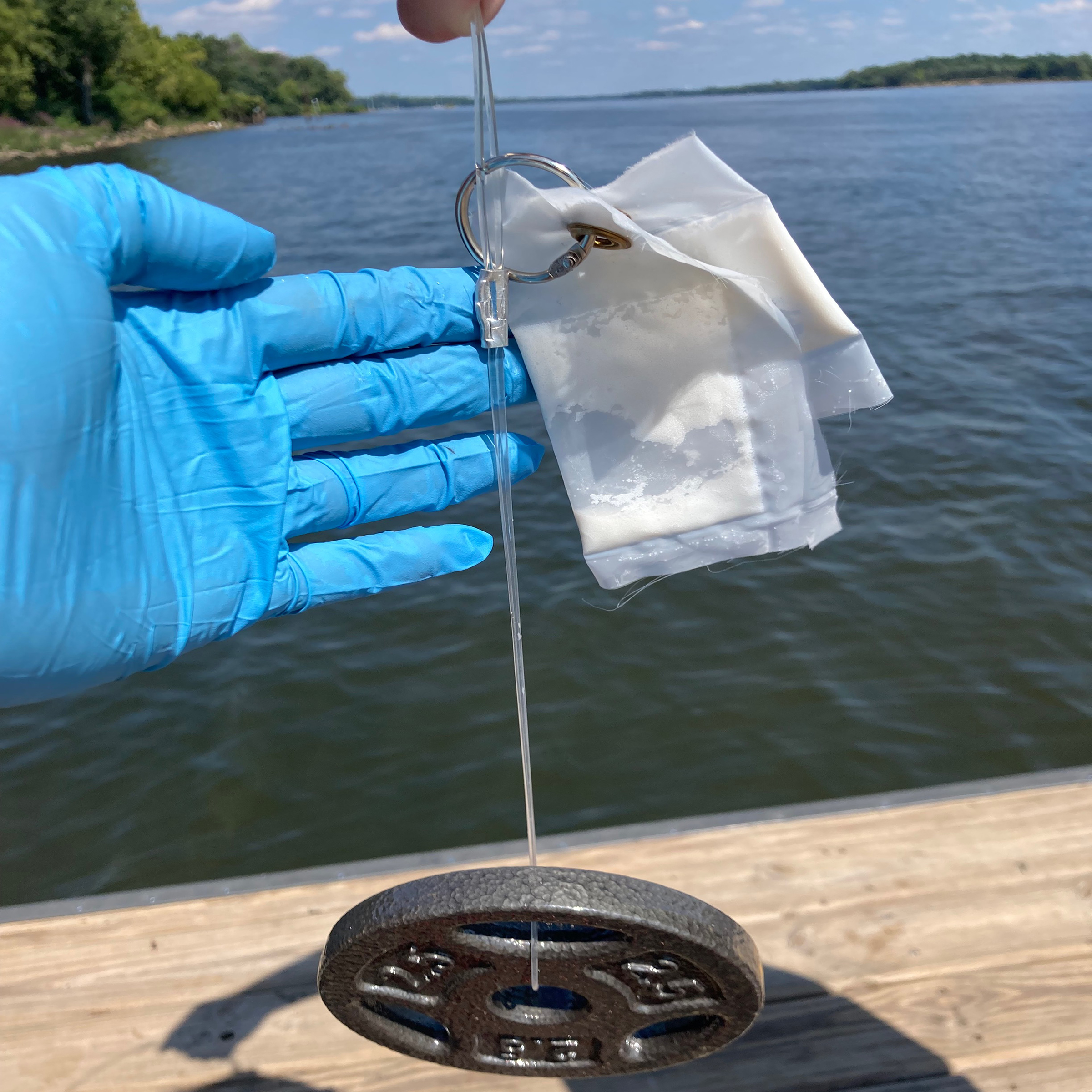 |
| SPATT bags about to be deployed in the Delaware River. Photo by the DRBC. |
The DRBC will repeat the SPATT (Solid Phase Adsorption Toxins Tracking) methodology to track the presence or absence of cyanotoxins in the Delaware River. This methodology was used in 2022 & 2023 to sample the tidal mainstem (2022) and nontidal mainstem (2023) Delaware River. Monitoring is important to protect drinking water.
• DRBC staff will construct the SPATT bags.
• In 2024, the SPATT bags will be deployed at 10 locations in the tidal and nontidal river.
• During deployment & retrieval at each monitoring site, grab water samples will also be collected for microcystin congener analysis.
• The deployment will be done in August/September, the deployment period will be 8 days.
• The environmental lab at DNREC will analyze for the presence of microcystin, cylindrospermopsin and anatoxin-a, all harmful algal bloom toxins.
• Learn more about the DRBC's Cyanotoxin Study
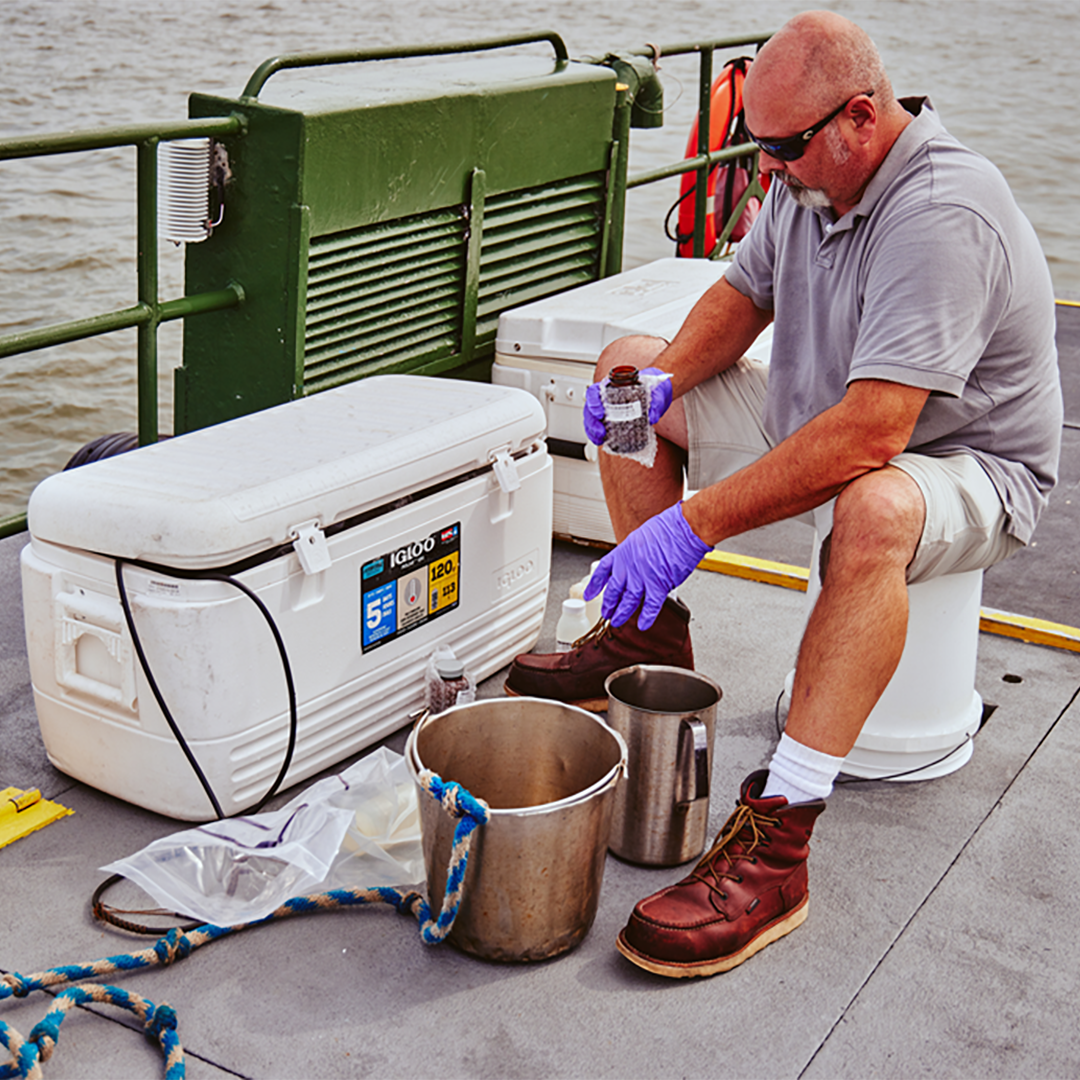 |
| A DNREC staffer collects a sample for the DRBC's Delaware Estuary Water Quality Monitoring Program. Photo courtesy of Errol Ebanks, DNREC. |
Initiated in 1967, DRBC's Delaware Estuary Water Quality Monitoring Program (aka the Boat Run) is one of the longest running monitoring programs in the world.
• The DRBC contracts the Delaware Department of Natural Resources and Environmental Control (DNREC) to perform the monitoring work; DRBC staff assesses the data.
• 22 sites are monitored once monthly, from March through October, in the Delaware River Estuary.
• Parameters monitored include bacteria, dissolved oxygen, pH, temperature, specific conductance, turbidity, nutrients (ammonia, nitrate + nitrite, phosphorus), chlorides and metals.
• Learn more about this monitoring program.
• The bacteria data are posted on the DRBC website (see above link); all other data are available via the U.S. EPA's Water Quality Portal.
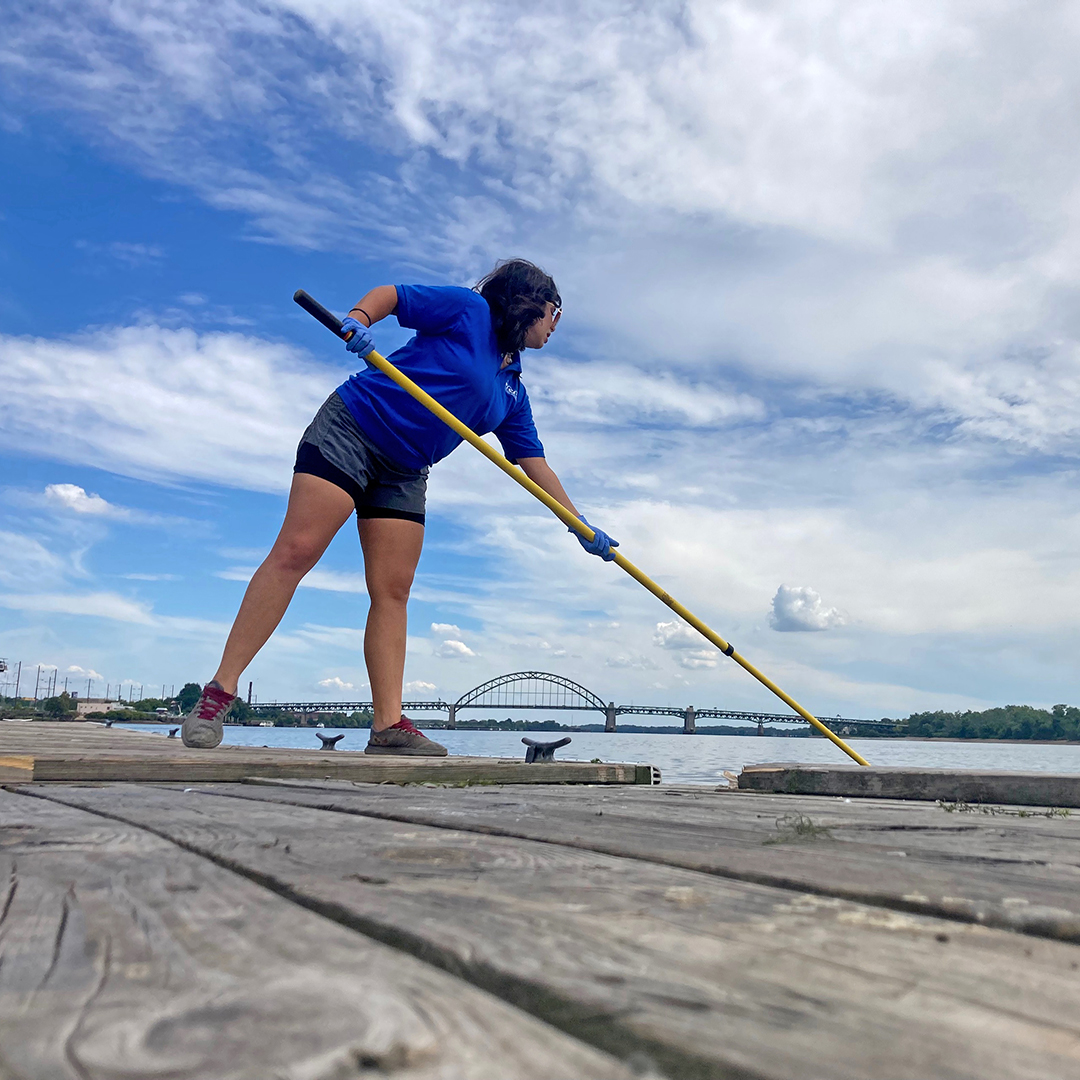 |
| DRBC staff collects a water sample to monitor for bacteria. Photo by the DRBC. |
Too much bacteria in the water can make humans sick if they come into contact with it, impacting recreational access. The entire Delaware River is deemed suitable for swimming, except for a portion of the river's urban waters around Philadelphia and Camden, mainly due to stormwater runoff and sewer overflows. There is an ongoing effort by the DRBC and its co-regulators to develop near- and long-term strategies for improving bacteria levels in the urban river corridor.
The DRBC's Delaware Estuary Water Quality Monitoring Program (see above) samples for bacteria in the center channel, and DRBC also monitors near-shore bacteria levels. Near-shore is where most people would be recreating.
• In 2024, the DRBC will target monitoring before, during and after three rain events at five sites to track trends. These five sites - Betsy Ross Bridge, Ben Franklin Bridge, Navy Yard, Paulsboro and Eddystone - are part of the Delaware Estuary Water Quality Monitoring Program.
• In summer 2024 and possibly also summer 2025, the DRBC will be working with the Pa. Department of Environmental Protection to monitor up to 89 sites in the Delaware Estuary. Sites will include transects, single locations and tidal tributaries.
• DRBC will also be working with the N.J. Department of Environmental Protection to collect surface water samples to monitor for bacteria in 2024.
• Learn more about the DRBC's Bacteria Monitoring Program
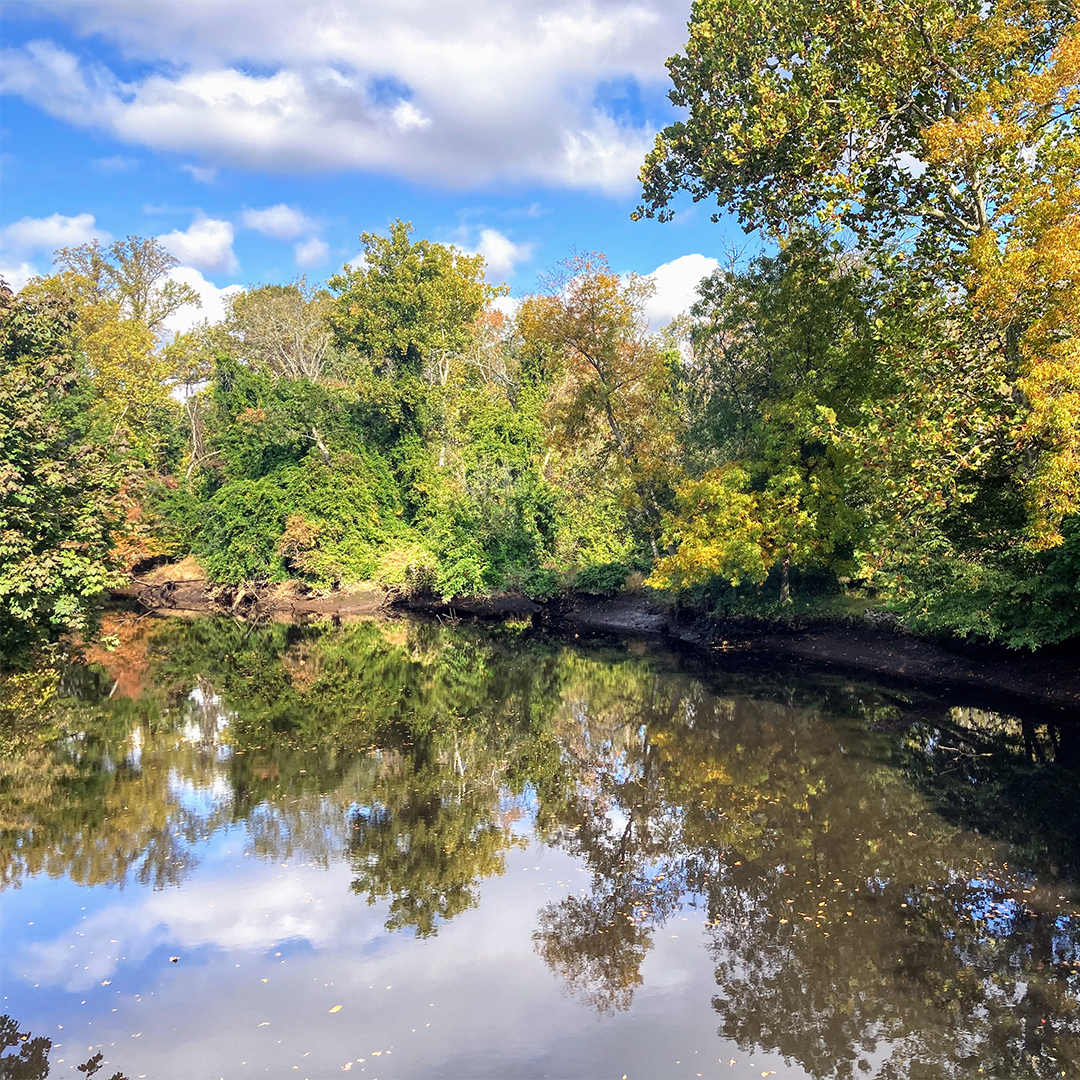 |
| The Rancocas Creek, a N.J. Delaware River tributary. Photo by the DRBC. |
Collecting information about nutrient concentrations in the Delaware River and its tributaries is important to protect water quality.
• In 2024, the DRBC is collaborating with the N.J. Department of Environmental Protection (NJDEP) to collect nutrient samples from 4 N.J. tidal tributaries: Blacks and Crosswicks creeks (sampled as one system), Pennsauken Creek, Rancocas Creek and Raccoon Creek.
• This collaborative effort is targeting tributaries with point-source discharges (NPDES permit holders) and known water quality impairment to get a better understanding of numerical nutrient concentrations in these waterways.
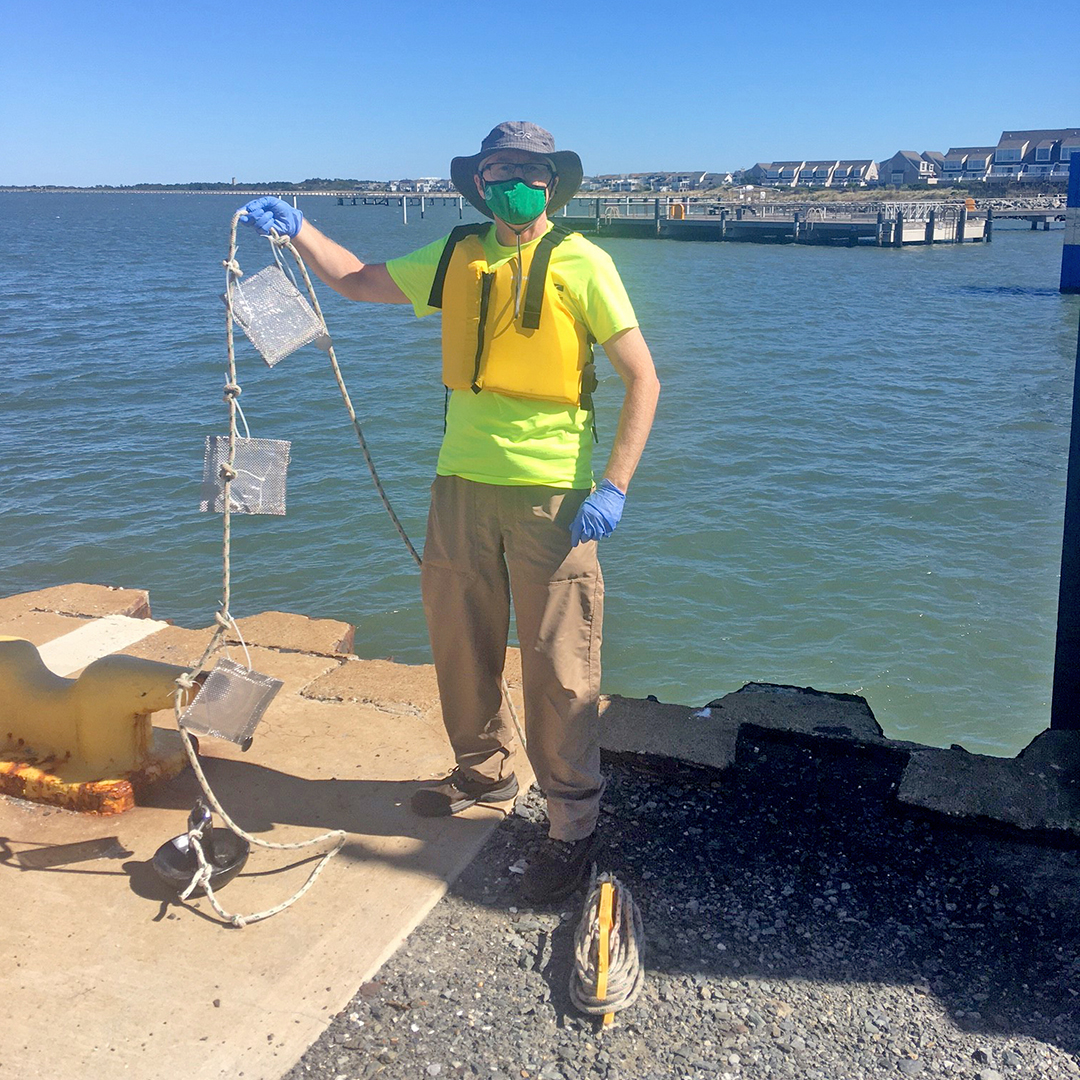 |
| DRBC staff deploys a passive PCB sampler in Lewes, Del. Photo by the DRBC. |
PCBs are a class of carcinogenic chemicals that have been banned, but still persist in the environment. The DRBC has a long-term dataset on PCBs and other pollutants in the Delaware River Estuary, monitoring surface water, sediment and fish tissue.
• In 2024, the DRBC will be deploying passive samplers and collecting sediment samples to monitor for PCBs and other toxics.
• Passive samplers will indicate relative concentrations of PCBs in the Delaware River mainstem from Trenton, N.J. to Lewes, Del.
• Sediment samples will be collected in 12 tributaries and will be analyzed for PCBs, Organochlorine pesticides, Dioxins and Furans.
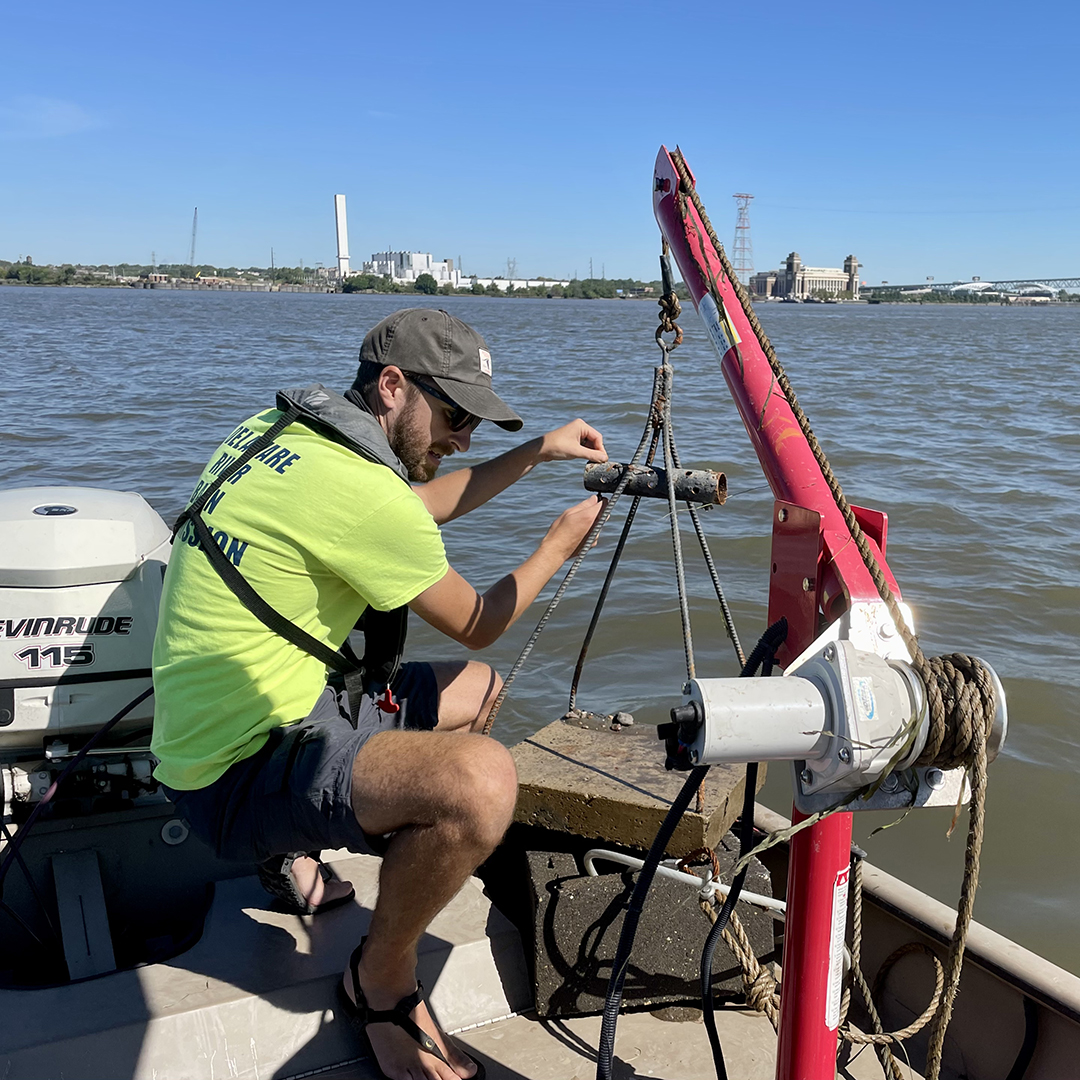 |
| DRBC staff retrieves a DO logger (black, cylindrical object) from the Delaware River. Photo by the DRBC. |
The DRBC is studying dissolved oxygen (DO) trends in areas considered nursery grounds for juvenile endangered Atlantic sturgeon. It is known that young sturgeon are more sensitive to DO levels in the water.
• In 2024, DO loggers will be deployed at three locations near Marcus Hook; top and bottom will again be sampled, targeting low flows from June - September.
• Learn more about this effort (scroll down to "Sturgeon Spawning Study")
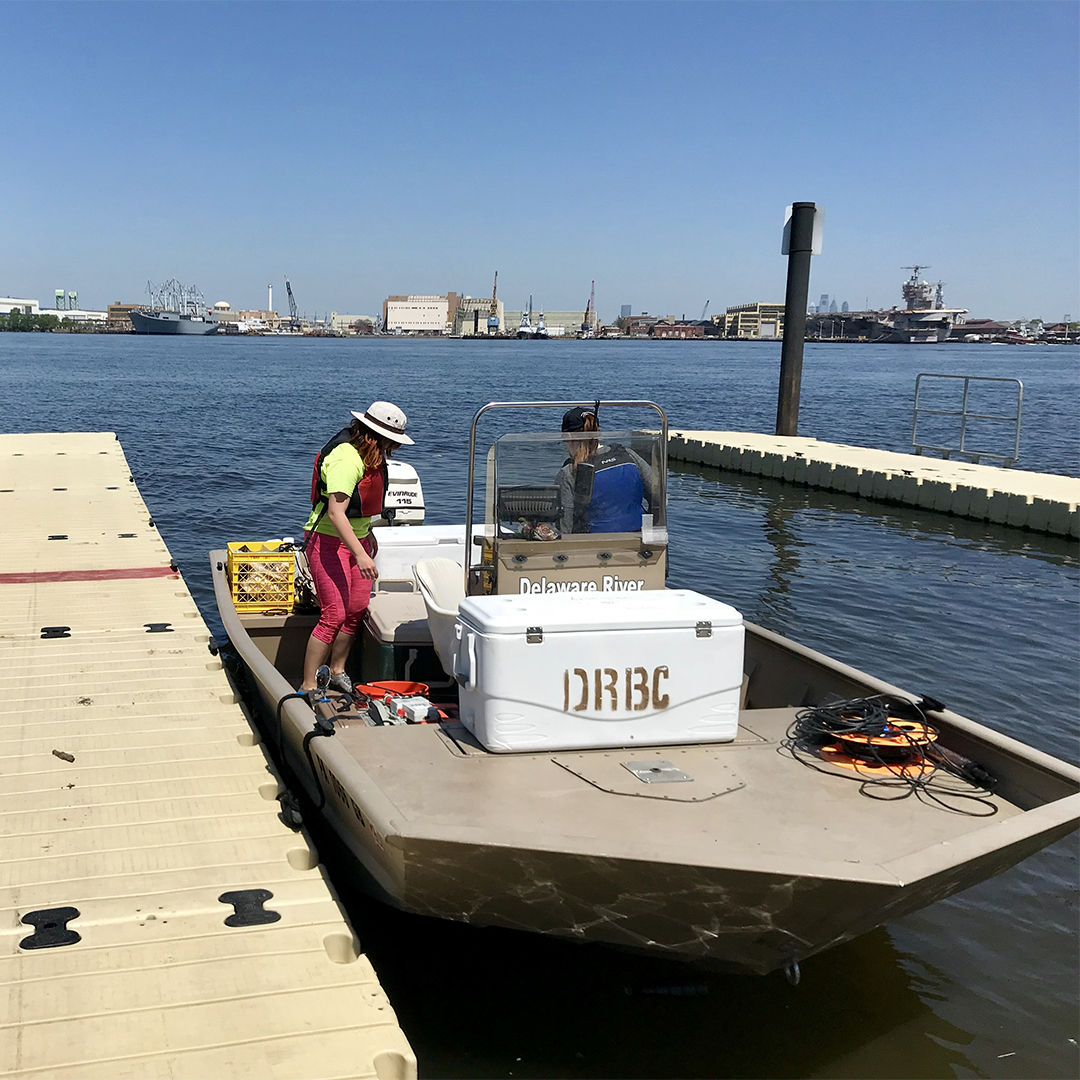 |
| DRBC staff prepares the boat to monitor for phytoplankton. Photo by the DRBC. |
The DRBC's eutrophication model suggests that observed phytoplankton blooms in Zones 3-5 may be caused by transient micro-blooms in Zone 2 that propagate and magnify downstream in the estuary. This monitoring effort will obtain additional field data to help explain observed phytoplankton blooms on finer geographic and temporal scales than existing monitoring regimes provide.
• In 2024, DRBC will install continuous fluorometers at three locations: Schuylkill River at Fairmount Dam; Delaware River at Bristol Wharf; and Delaware River at Chester (Kimberly-Clark gage).
• The meters will be deployed from mid-April to mid-October.
• In addition, water samples will be collected and monitored for chlorophyll-a and algae to identify density and composition.
• All analytical work to be conducted by the Academy of Natural Sciences Drexel University.
Copyright © Delaware River Basin Commission,
P.O. Box 7360, West Trenton, NJ 08628-0360
Phone (609)883-9500; Fax (609)883-9522
Thanks to NJ for hosting the DRBC website